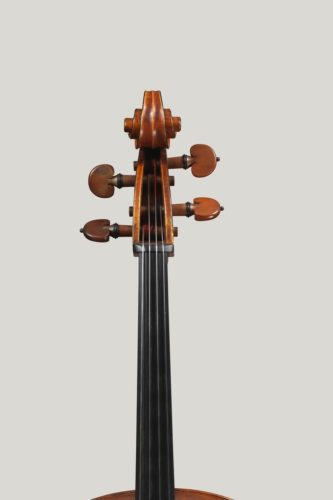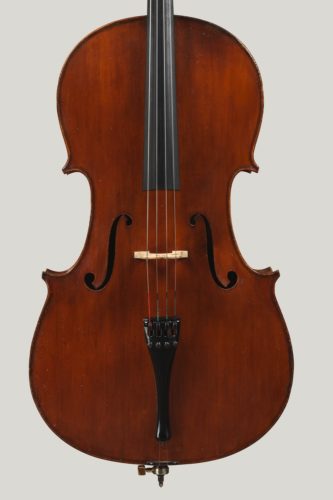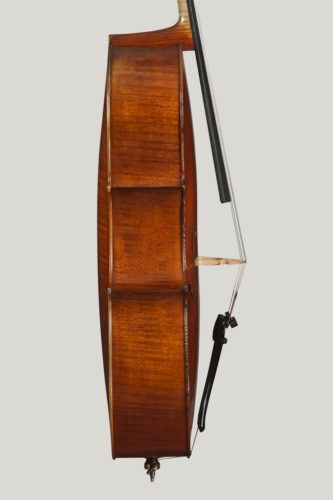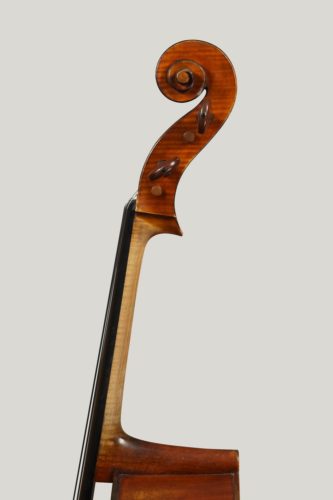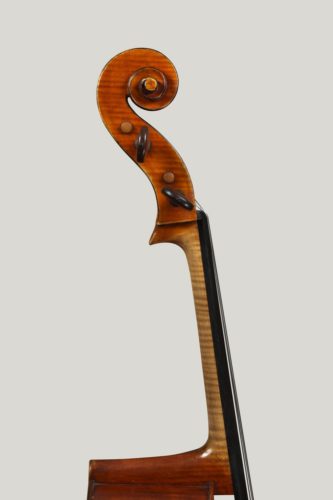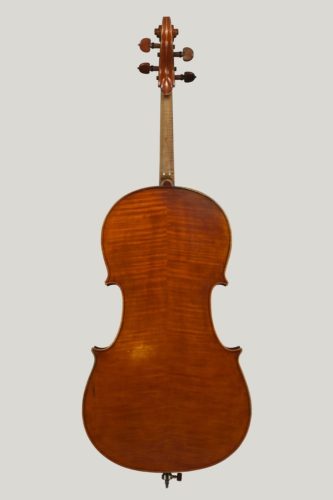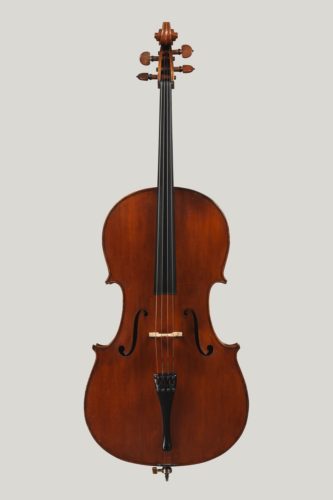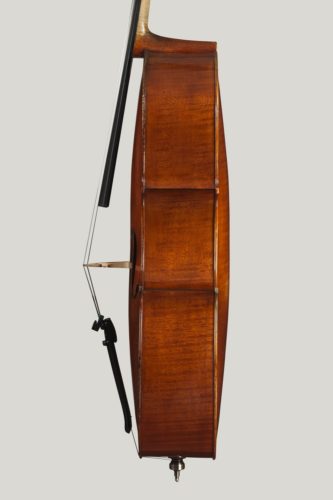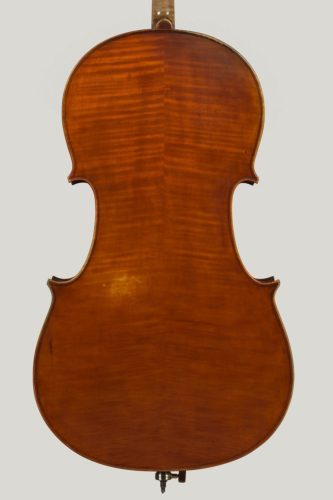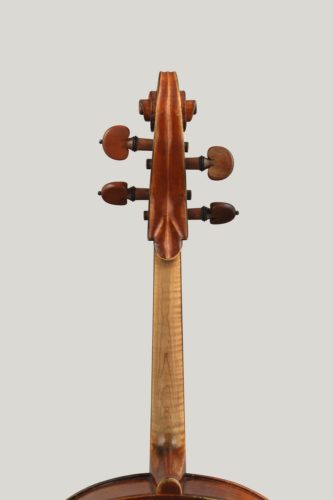Enrico Rocca
Cello made by Enrico Rocca in Turin in 1900. Ole Eirik Ree plays on this instrument.
Enrico Rocca seems to have had a turbulent life before finally settling on his father’s career of violin making. Giuseppe Rocca (1807-1865) was a powerful and prolific maker in Turin, whose elegant and precise copies of Stradivari and Guarneri del Gesù sparked new life into a previously barren period in violinmaking throughout Europe.
His status and reputation may have been intimidating to the young Enrico, who was born in Turin in 1847 at the height of Giuseppe’s success. Around 1860 however the family moved to Genoa, and the elder Rocca’s work began to decline noticeably in quality until his death in 1865. It seems as if Enrico had not at that point made any significant contribution to the workshop himself, and rather than continue the family business he took up work in the Genoa shipyard until about 1878.
It was only then that he returned to violinmaking on his own account, using his father’s tools and patterns, but working out his techniques and style largely by himself. His output was small compared with that of his father,and it has to be said that his workmanship was not on the same level. Nevertheless, he exhibited successfully at expositions around Italy, and his later instruments are amongst the best that the early period of the 20th century has to offer. Although all his work seems to have been labelled in Genoa, he eventually returned to Turin, where he died in 1915.
The cello owned by Dextra Musica exemplifies his best work. It is a beautifully proportioned Stradivari model made from the finest materials, and is in an immaculate state of preservation.
The back is made from two matched pieces of quarter-cut maple with a wonderfully regular downward sloping figure, marred only by a small sap stain in the lower bout. The ribs are cut from matching wood, but the scroll shows a narrower, lighter figure. The carving of the scroll is very typical of Enrico Rocca’s work, with a large boss, lightly applied chamfer emphasised with a black line, and rather hollow undercutting which shows the use of fine abrasives in the finish.
The front is of high quality alpine spruce, joined at the centre from two matched halves, with a flawless straight and even grain. The whole instrument is covered with a richly tinted varnish of glossy texture, remarkably little worn by use.
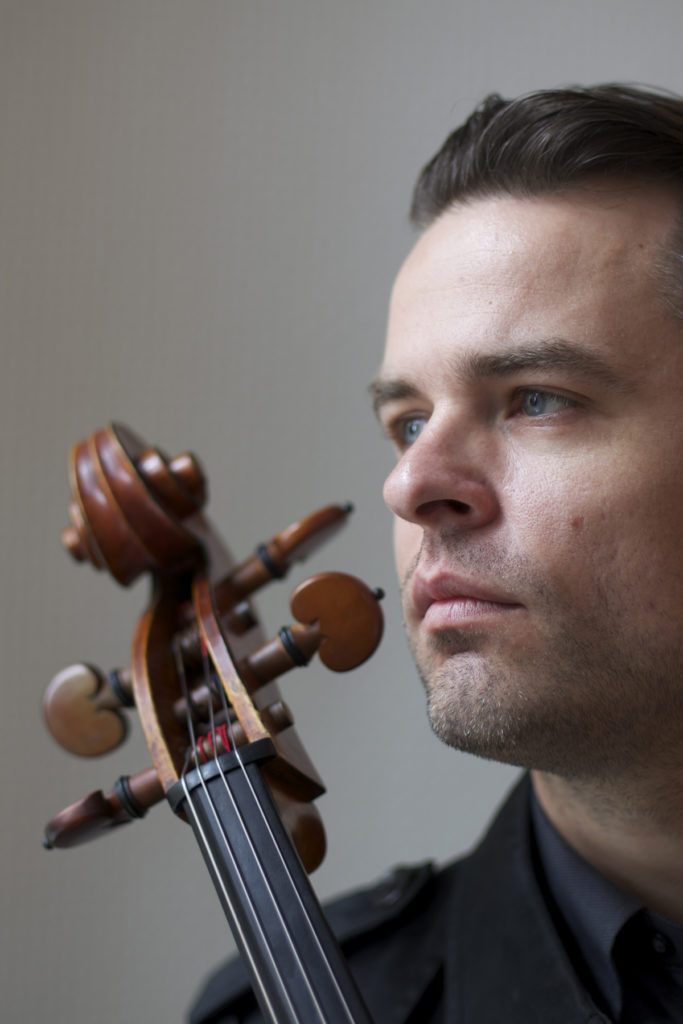
Ole Eirik Ree
Ole Eirik Ree is an Assistant Professor at the Barratt Due Institute of Music, Director of Graduate studies, Director of Chamber Music for the institute’s young talents program. Ree earned his doctoral degree in musical arts from the Mason Gross School of the Arts. (Photo by: Henning Kraggerud)
